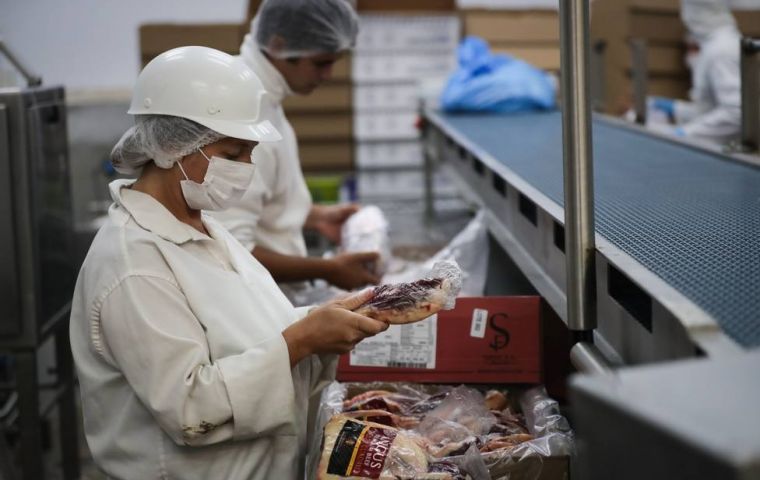MercoPress. South Atlantic News Agency
Labour strife in port of Montevideo; increasing export volumes shipped from Rio Grande in Brazil
 Rio Grande, according to Brazilian sources in 22 months shipped overseas some 45,000 tons of Uruguayan protein
Rio Grande, according to Brazilian sources in 22 months shipped overseas some 45,000 tons of Uruguayan protein Recurrent labour strife in the port of Montevideo is not only frustrating but is also seriously limiting activities, and only this week did the Union of Uruguayan exporters make public a release regretting the fact that several vessels abandoned the port given what is known as pearled stoppages.
These actions impeded the loading of hundreds of containers ready for export, and at the same time the unloading of others, already delayed, with merchandise for Christmas and inputs for different industries.
This also further complicates the current global situation with insufficient containers, scarce hold capacity and vessels, plus exorbitant freight rates, pointed out in the release.
Apparently, on this occasion, the motive for the protest and strike was that a few workers were sent to insurance payment because of less work from one of the main operators in the port of Montevideo, plus other salary demands.
But in a highly interconnected world, such actions are not limited to the scene where they take place. In effect news from the Brazilian neighboring state of Rio Grande do Sul, and its port, Rio Grande, a real hub for the region, reported that it is becoming an increasing attraction for Uruguayan clients, exporters and farmers, allegedly taking advantage of a raft of logistics' situations.
From January to October, Wilson Sons, a leading maritime agency in Rio Grande port informed of a 226% increase in cargo coming from Uruguay, compared to the same period in 2020. In the October to October twelve-month period, 2,328 TEU containers were handled, equivalent to more than 30,000 tons of Uruguayan produce.
Animal protein accounts for the largest share of exports. In July of this year, the container terminal at the port of Rio Grande does Sul also started shipping plywood operations. The cargo comes mainly from northern Uruguay. The route has advantages for the producer, such as greater proximity (Tecon Rio Grande is less than 300 km from the producing region, while the Port of Montevideo is 400 km away) plus more attractive costs.
The first shipments of animal protein from Uruguay arrived at Tecon Rio Grande in January 2020. During these 22 months, the terminal received 3,562 TEU of cargo for export, equivalent to 45,553 tons. However, it now seems that the situation is mutually attractive. Tecon Rio Grande also has other products on the radar. “In addition to meat, the northern region of Uruguay produces rice, wool and dairy products, which can also benefit from this efficient logistical corridor”.




Top Comments
Disclaimer & comment rulesCommenting for this story is now closed.
If you have a Facebook account, become a fan and comment on our Facebook Page!